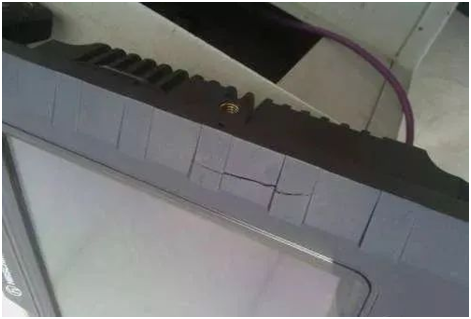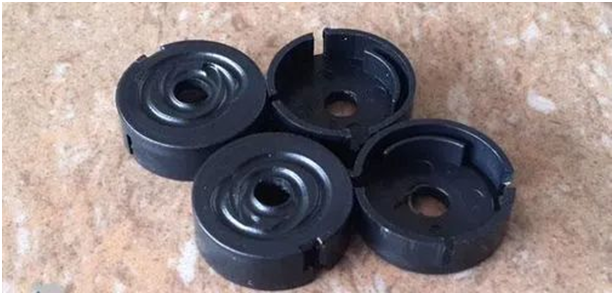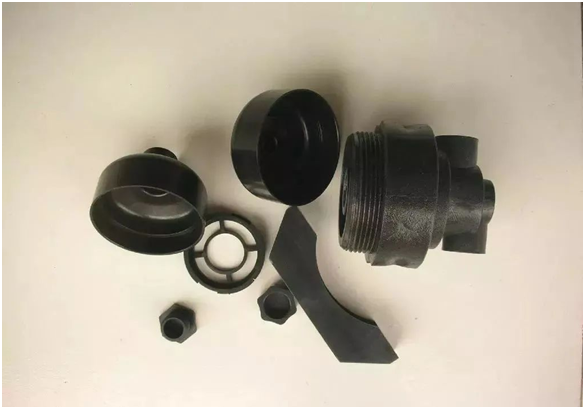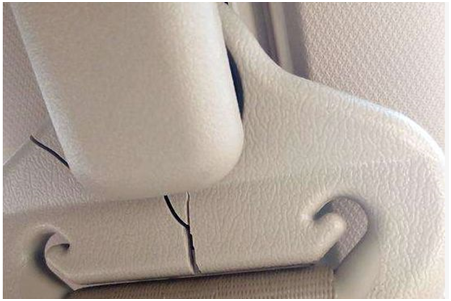©Copyright 2019 SIKO POLYMERS (SUZHOU) CO., LTD All rights reserved.Site Map Powered by iwonder.cn
- Email Uskevin@sikopolymers.com


1. Residual stress is too high

In the process operation, it is the easiest way to reduce the residual stress by reducing the injection pressure, because the injection pressure is proportional to the residual stress.
If the cracks on the surface of the plastic parts are black around, it indicates that the injection pressure is too high or the feeding amount is too little. The injection pressure should be properly reduced or the feeding amount increased. When forming under the condition of low material temperature and mold temperature, in order to make the cavity full, it is necessary to use higher injection pressure, resulting in a large amount of residual stress in the plastic parts.
To this end, the temperature of the cylinder and the mold should be properly increased, the temperature difference between the molten material and the mold should be reduced, the cooling time and speed of the mold embryo should be controlled, so that the orientation of the molecular chain has a longer recovery time.
In addition, under the premise of ensuring insufficient feeding and not making the plastic parts shrink and sag, the pressure holding time can be appropriately shortened, because the pressure holding time is too long and it is easy to produce residual stress to cause cracks.
In mold design and production, the direct gate with minimum pressure loss and high injection pressure can be used. The forward gate can be changed into multiple needle point gate or side gate, and the gate diameter can be reduced. When designing the side gate, the flange gate which can remove the broken part after forming can be used.
2. External forces cause residual stress concentration

Before the release of plastic parts, if the cross-sectional area of the ejection mechanism is too small or the number of ejection rod is not enough, the location of ejection rod is not reasonable or installation tilt, poor balance, the release slope of the mold is insufficient, ejection resistance is too large, will result in stress concentration due to external force, so that the surface of the plastic parts crack and rupture.
Under normal circumstances, this kind of failure always occurs around the ejector rod. After this kind of failure, should carefully check and adjust the ejection device. The ejector rod is arranged at the part of the demulding resistance, such as protruding, reinforcing bars, etc. If the number of jacking rods set cannot be expanded due to the limited jacking area, the method of using a small area and multiple jacking rods can be adopted.
3. Metal inserts cause cracks

The thermal expansion coefficient of thermoplastic is 9~11 times larger than that of steel and 6 times larger than that of aluminum. Therefore, the metal inserts in the plastic parts will hinder the overall shrinkage of the plastic parts, resulting in great tensile stress, and a large amount of residual stress will gather around the inserts to cause cracks on the surface of the plastic parts. In this way, the metal inserts should be preheated, especially when the cracks on the surface of the plastic parts occur at the beginning of the machine, most of which are caused by the low temperature of the inserts.
In the selection of molding raw materials, should also use high molecular weight resin as far as possible, if must use low molecular weight molding raw materials, the plastic thickness around the insert should be designed thicker, for polyethylene, polycarbonate, polyamide, cellulose acetate plastic, the plastic thickness around the insert should be equal to at least half of the diameter of the insert; For polystyrene, metal inserts are generally not suitable.
4. Improper selection or impurity of raw materials
The sensitivity of different raw materials to residual stress is different. Generally, non-crystalline resin is more prone to crack induced by residual stress than crystalline resin. For the absorbent resin and the resin mixed with more recycled material, because the absorbent resin will decompose and embrittleness after heating, the small residual stress will cause brittle cracking, and the resin with higher recycled material content has more impurities, higher volatile content, lower material strength, and easy to produce stress cracking. Practice shows that the low viscosity loose resin is not easy to crack, so in the production process, should be combined with the specific situation to choose the appropriate forming material.
In the process of operation, release agent for molten material is also a foreign body, such as improper dosage will also cause cracks, should try to reduce its dosage.
In addition, when the plastic injection machine needs to replace the raw material variety due to production, it must clean up the remaining material in the hopper feeder and dryer, and clear the remaining material in the cylinder.
5. Poor structural design of plastic parts

The sharp corners and gaps in the structure of plastic parts are most likely to produce stress concentration, leading to cracks and cracks on the surface of plastic parts. Therefore, the outer Angle and the inner Angle of the plastic structure should be made of the maximum radius as far as possible. The test results show that the ratio between the radius of the arc and the wall thickness of the corner is 1:1.7. When designing the structure of plastic parts, the parts that must be designed into sharp corners and sharp edges should still be made into a small arc with a small transition radius of 0.5mm, which can extend the life of the die.
6. There is a crack in the mold
In the process of injection molding, due to the repeated injection pressure of the mold, the edge part of the cavity with acute Angle will produce fatigue cracks, especially near the cooling hole is particularly easy to produce cracks. When the mold is in contact with the nozzle, the bottom of the mold is squeezed. If the positioning ring hole of the mold is large or the bottom wall is thin, the surface of the mold cavity will also produce fatigue cracks.
When the cracks on the surface of the mold cavity are reflected on the surface of the plastic part, the cracks on the surface of the plastic part always appear continuously in the same shape in the same part. When such cracks appear, the corresponding cavity surface should be checked immediately for the same cracks. If the crack is due to reflection, the mold should be mechanically repaired.